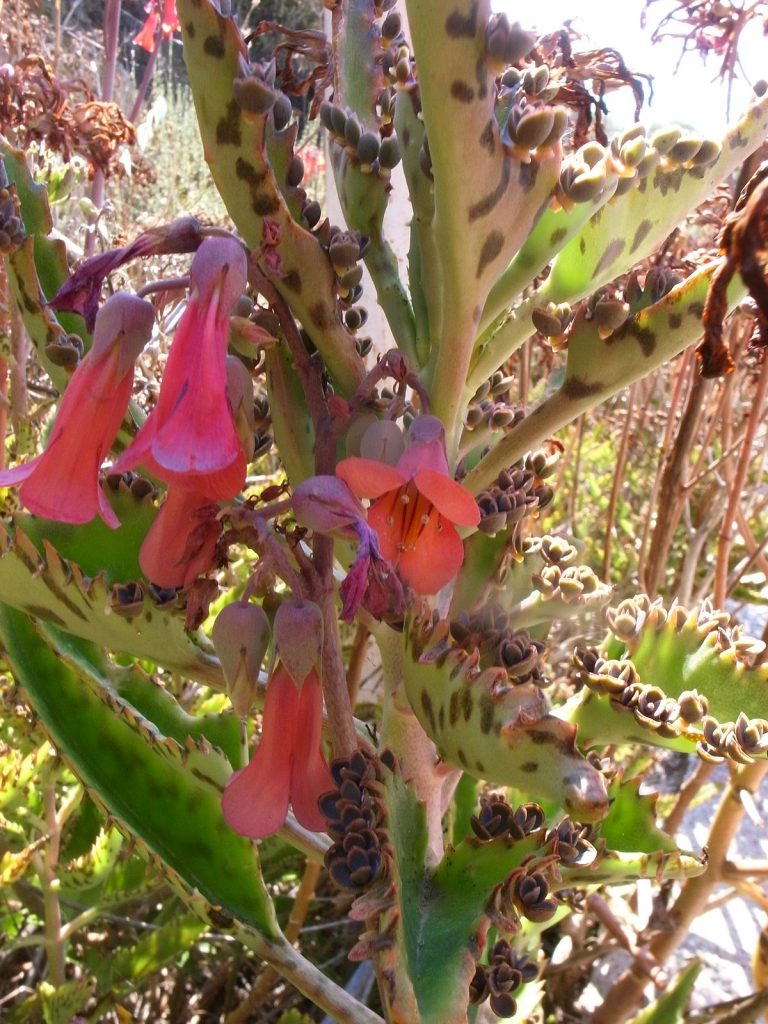
Also known as mother of thousands, devil’s backbone, and Mexican hat plant, this short-lived, succulent perennial is native to Madagascar and a member of the stonecrop family, Crassulaceae, that also includes sedum, hens and chickens, and jade plant. Plants grow up to 3’3″ tall and have a decumbent, brownish stem and thick green leaves that are oblong to lanceolate, up to 8″ long, and are purple blotched on the underside. Spoon-shaped structures on the margins of the leaves produce plantlets that form roots, drop from the leaves, and grow into new plants. Terminal umbrella-like clusters of flowers appear periodically or not at all. Each small, tubular flower is pendent and has grayish pink to orange petals. Alligator plant is heat and drought tolerant and is an excellent choice for a rock garden, scree, or Mediterranean garden. It can become invasive and is poisonous to humans and pets. The genus name, Kalanchoe, is the latinised corruption of the Chinese word ‘Kalan Chau’, which means that which falls and grows, and refers to its asexual reproduction. The specific epithet, daigremontiana, is the latinized form of daigremontianin, a very toxic steroid that is found in all parts of this plant.
Type: Short lived succulent perennial
Bloom: Grayish pink to orange periodically or not at all
Size: 3’3″ H
Light: Indirect bright light to partial shade
Soil: Gritty, sandy, very well drained such as commercial cactus mix
Hardiness: Zones 9-11
Care: Water every 2 weeks when growing indoors, more frequently when grown in the garden
Pests and Diseases: Aphids, mealybugs, scale
Propagation: Plantlets
Companion Plants: Cactus, aloe, agave, sedum, Euphorbia ‘Tasmanian Tiger’
Outstanding Selections: ‘Variagata’
Photo Credit: Wikispecies